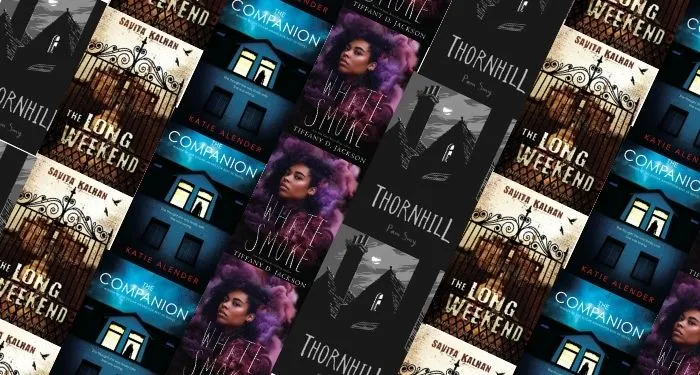
Something’s Amiss: 12 of The Best Gothic YA Books
Whether you consider yourself a horror fan or not, chances are you’ve read or viewed something that falls under the horror umbrella: gothic literature. Defined as a writing style that employs atmosphere, dark and startling scenery and imagery, and even though it’s typically associated with horror, gothic literature often has a romantic undertone — or even overtone — to it as well. That romance can be among the main characters of the story or a romantic appreciation of the language and visual aspects of the story itself. Gothic YA books in recent years have really leaned into this marriage of horror and romance, with a whole host of variations on tropes including the haunted house, the unknown, and the sublime.
Gothic literature is believed to have originated in England, with many crediting Horace Walpole’s The Castle of Otrano as the first gothic novel. Romanticism was at its height then, and the growth of gothic literature from that era makes sense. It continued to grow into popularity in the 1800s, with books like Mary Shelley’s Frankenstein, Edgar Allan Poe’s work, and Dracula among some of the biggest names. Though gothic literature was popular across England and Germany at this time, when it emerged in the U.S., it relied on those foundations, but it found its own flavor as well.
Stephen King, Toni Morrison, and Shirley Jackson are among the most well-known American authors of gothic horror. Though many of the traditional elements of gothic literature are present in its American cousin, American gothic often includes settings and situations which are uniquely American: slavery, environmental destruction, colonization, and genocide are among the big, meaty cultural elements explored in these stories. The settings are also American, with southern gothic and midwestern gothic playing into the horroresque settings and regional norms and practices.
There’s less romanticism in American gothic, though it’s still present. This is especially true in YA gothic books, as is another common element: the exploration of mental illness, the experiences of strange things, and either or both may or may not be accompanied by supernatural beings. In some cases, mental illness acts as a “gotcha,” wherein the reader is led to believe something is happening in a story but instead learns it’s all inside the protagonist’s head (depending on the reader and their own experiences with mental illness, this can feel damaging or it can feel empowering — every individual’s read is different). In others, though, mental illness ends up being a tool that serves as protection or one of power. Still others allow the presence of mental illness to have no defining mark on the exterior experiences of the characters.
Let’s take a dive into some of the best YA gothic books, ranging from titles in the YA backlist to those which are newer. What makes gothic YA books especially fascinating is how these stories combine all of the above-noted elements, while also adding in the strange foreignness of adolescence. Is it normal to feel so abnormal when you’re in the midst of the biggest physical, mental, and emotional changes in your life? This reflection on the disembodied reality of being a teenager is but one of the many questions these books explore.
Chills, Thrills, and Questions Abound in These Gothic YA Books

Amity by Micol Ostow
Ten years ago, Connor and his family moved into Amity. Ten years ago, the house started scaring Connor, convincing him of things that may or may not have been happening. Convincing him that he needed to act upon an impulse. One that led to terrible consequences.
Now, Gwen and her family have just moved into Amity. Immediately, weird things begin happening, and Gwen starts to feel like the house is haunted. She’s visited by Annie — and it’s Annie who convinces her to act upon some impulses she’s getting from Amity. It’s Annie that ties Connor to Gwen across those ten years.
Ostow’s novel is a fun, bloody, and creepy horror romp. It fits the bill for readers who love their horror with a side of exploration of whether it’s the thing at hand or something internal, and while readers who know Amityville Horror will find a whole new layer to the story here, no background is necessary to enjoy Ostow’s book.
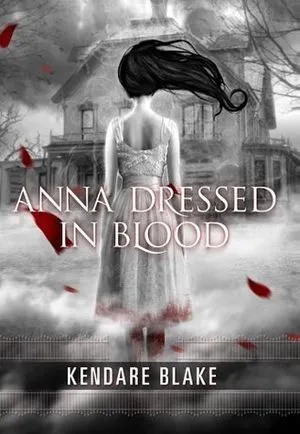
Anna Dressed in Blood by Kendare Blake
Readers who love Supernatural will get many of the same flavors with Blake’s debut novel, which follows Cas, a teen who has an unusual career: he kills the dead. Cas’s father was killed doing this job, so he’s especially determined to keep the family business going. With his kitchen witch mom and his magical cat, he travels the country seeking out local lore and legends to put an end to the creatures who will not stay dead.
When Cas meets Anna Dressed in Blood, he’s ready to do what he usually does. Except Anna, who was murdered in 1958 and seeks vengeance on anyone who steps into the abandoned home where she’s residing, chooses to spare Cas of her wrath.
Now, he’s got more questions than he does answers and doesn’t know if he can do the job with which he’s tasked.

Beware The Wild by Natalie C. Parker
If southern gothic is your jam, don’t miss this duology from Parker.
On a terribly sticky morning in June, Sterling and her brother Phin have a huge argument. In response, Phin runs down to the town swamp and he doesn’t return. The town of Sticks, Louisiana, has always believed the swamp to be dangerous and mysterious. But though Phin doesn’t return, someone does emerge from the swamp: Lenora May.
It seems no one can remember Phin in town, as if his disappearance meant never existing at all, and Sterling is determined to find out what happened to him and how his vanishing is related to Lenora May.
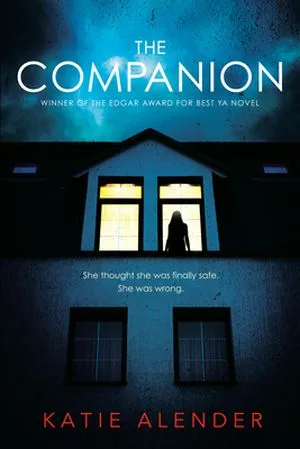
The Companion by Katie Alender
Margot is rescued from a home for orphaned children by a friend of her now-deceased father. Now, she’s to take on the role as companion for Agatha, the family’s daughter who is weak, sick, and kept in a nursery room for constant care. It’s not ideal, but Margot knows she’s lucky to be here, even if it means dealing with the creepy old house, the mysterious words appearing in her sleeping area, all of the rooms she’s not to be in…
It’s Laura, the mother, who is especially suspicious, regularly wanting to talk to Margot about how things are going in a way Margot doesn’t trust. And she’s right for not trusting: Laura’s stories don’t add up, and every new thing Margot discovers only further paints a picture of a woman creating a web of lies about who she is, about what happened to Agatha, and about what the future might hold for Margot.
A delicious modern gothic, the hints here aren’t meant to lead to a huge twist ending. If you’ve read a book with these elements, you know what’ll happen, but it’s a fun, satisfying ride.

Frost by Marianna Baer
Looking for a loose retelling of Rebecca set at a boarding school? Baer’s debut is going to be your jam.
Leena and her friends are eager for their senior year at boarding school. They’ve signed up to live together in Frost House, a Victorian dorm just off campus which promises them freedom. But an unexpected roommate joins them, and the girl, Celeste, brings with her a lot of trouble. Leena feels unsafe around her, especially as Celeste continues to blame Leena and her other roommates for the strange goings-on, including…bug infestations, a creepy owl figurine, frames falling off walls, moving furniture, and more.
As Leena begins to become romantically linked to Celeste’s brother, she’s finding old childhood fears reawakening as things go from bad to worse with her roommate. This creepy, twisty book has a surprise and satisfying ending, though the entire ride is a treat for gothic horror fans.
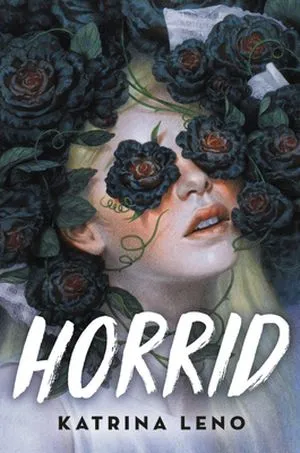
Horrid by Katrina Leno
Jane North-Robinson and her mom leave California after the death of her father and head to her mother’s old, falling apart home in Maine. They’re looking for a fresh start, but North Manor isn’t interested in offering that to them. Instead, Jane and her mother struggle with new relationships, as well as those which emerge as a result of the memories locked in the old home.
Then Jane discovers the room her mother has kept locked that she’s called a “storage room” is anything but. It’s a little girl’s room and though it looks empty, it’s not.

In the Shadow of Blackbirds by Cat Winters
Set during the Spanish influenza, Winters’s debut novel includes archival photographs to add even more atmosphere to the already-chilling story.
Mary Shelly Black, 16, has watched scores of mourners turn to seances and spirit photographers for comfort in the wake of devastating loss from the pandemic and World War I. She’s never been one to believe in the supernatural, when Mary’s first love, who died during a battle, shows up as a spirit, she begins to question what it is she truly believes.
Pair this read with Libba Bray’s The Diviners for a deep dive into the ways spiritualists of the era worked to allay grief, loss, and conjure magic for the bereaved.

Lakesedge by Lyndall Clipstone
Violeta Graceling — Leta — arrives at Lakesedge estate prepared to find a monster in Rowan, who, rumor has it, drowned his entire family. Leta soon discovers neither Lakesedge nor Rowan are what they’ve been built to be. She begins to fall quickly for Rowan, but soon discovers his allegiance to a sinister death god residing in the lake on the estate. Now Leta is drawn to that death god and must unpack the dark truth of her past, as well as her connection to the death god, in order to save herself and Rowan.

The Long Weekend by Savita Kalhan
The first rule of any horror movie or book is, if you’re with company, don’t separate. Stick together.
After accepting a ride home from a stranger, Sam and best friend Lloyd are trapped, separated, and desperate to find their way out of the remote estate to which they’ve been delivered. Their lives are in danger as the man with them is out for blood.
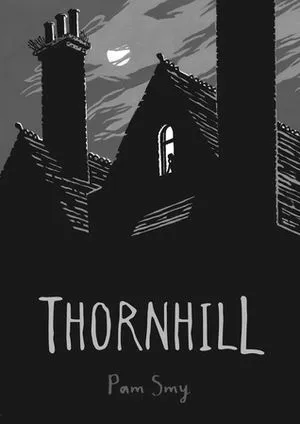
Thornhill by Pam Smy
This compelling and creepy graphic novel is Jane Eyre meets The Secret Garden set in 1982 and 2017, following Ella, who works to unravel the mystery of the ghost named Mary who haunts the abandoned Thornhill Institute for Children.
Ella’s story is told as a graphic novel as she works to understand Mary’s story of abuse and bullying within Thornhill while Mary’s story is told in diary entries, offering insight to both readers and Ella about the conditions under which she lived.
The art is chilling and evocative, and the story includes the best of all things gothic YA: creep dolls, an abandoned institute for orphaned children, ghosts, and a range of other delicious trope-y goodness.

White Smoke by Tiffany D. Jackson
One of the frustrating trends in marketing has been the use of Get Out as a comp for any thriller or horror book by a Black author. But in the case of that comp for Jackson’s first horror novel, it’s absolutely spot on, as this is a gothic read packed with social commentary.
Mari, our main character, is prickly, imperfect, and has a dark history, including intrusive thoughts and severe anxiety. When she and her blended family move to a new home in an area being redeveloped — modeled after Detroit — it’s a chance for her mother to pursue her dream and for them as a family to get a new, fresh, and exciting start. Except, there’s a lot of weird stuff going on in the house, as well as in the community. No one seems to live around them. All of the houses seem to be haunted. Their own house is definitely Not Right. What’s the deal?
Jackson is deft in her exploration of mass incarceration and in gentrification. Her character development is outstanding, and the way these two things weave together works so well. The creepy nature of the new house and the community’s residents only heighten the story’s gothic atmosphere.
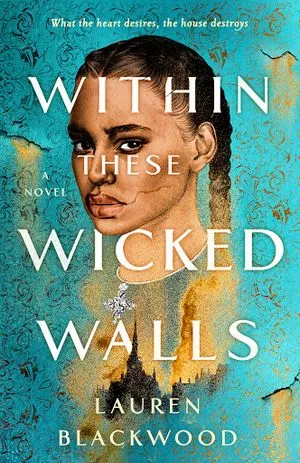
Within These Wicked Walls by Lauren Blackwood
This Ethiopian-inspired debut novel is a YA retelling of Jane Eyre, following Andromeda, a debtera. Debteras are exorcists who cleanse the homes of Evil Eyes, and Andromeda has been hired by Magnus Rochester for a job. But…it’s not like any job she’s done before, and chances are she herself may not survive what is happening in his household. And yet, Andromeda also knows she can’t leave Magnus to deal with his curse on his own, either.
We often limit our idea of gothic to horror or, as noted earlier, to an aspect of romance. What Blackwood does in this book is offer even more opportunity for the gothic to work across genres, as she applies the aspects of gothic storytelling to fantasy and bonus: this isn’t grounded in the traditional, Euro- or American-centric locations of gothic storytelling.
There are dozens upon dozens more YA gothic novels, so if any of the above books excite you, know you can find plenty more where these came from. You can dive into some more with these neo-gothic YA books and read through outstanding diverse YA horror.






